Table of Contents
Top Up Coolant” Warning in Mercedes: What It Means & How to Fix It
When your Mercedes displays the message “Top Up Coolant – See Owner’s Manual”, it means your cooling system requires attention. This alert typically signals low coolant levels but may also indicate deeper issues, such as a faulty sensor, leaks, trapped air pockets, or thermostat and fan faults.
Ignoring the warning is risky. Coolant is essential for regulating engine temperature and preventing overheating. Driving with low coolant can quickly lead to warped cylinder heads, blown head gaskets, or complete engine failure.
In this article, we’ll explain:
- – Common causes of the “Top Up Coolant” warning.
- – A real-world Mercedes S-Class case study.
- – DIY vs professional repair options.
- – Step-by-step instructions to safely top up coolant.
- – Preventive tips to avoid future warnings.
Common Causes & Symptoms
The table below outlines the main reasons your Mercedes may display this warning, along with symptoms and quick checks:
| Cause | Symptoms | DIY Diagnostic & Fix |
|---|---|---|
| Genuine coolant loss (leak) | Message appears repeatedly; coolant drops over time. | Inspect hoses, radiator, water pump; repair leak and refill. |
| Faulty reservoir sensor | Warning persists even when coolant level is correct. | Test sensor with multimeter; clean or replace. |
| Air pockets (after service) | Intermittent warnings; system recently serviced. | Bleed the cooling system to release trapped air. |
| Stuck thermostat or fan fault | Engine overheats; warnings during warm-up. | Verify fan engages; test thermostat; replace if faulty. |
Case Study : Top Up Coolant See Owners Manual Mercedes S-Class 500
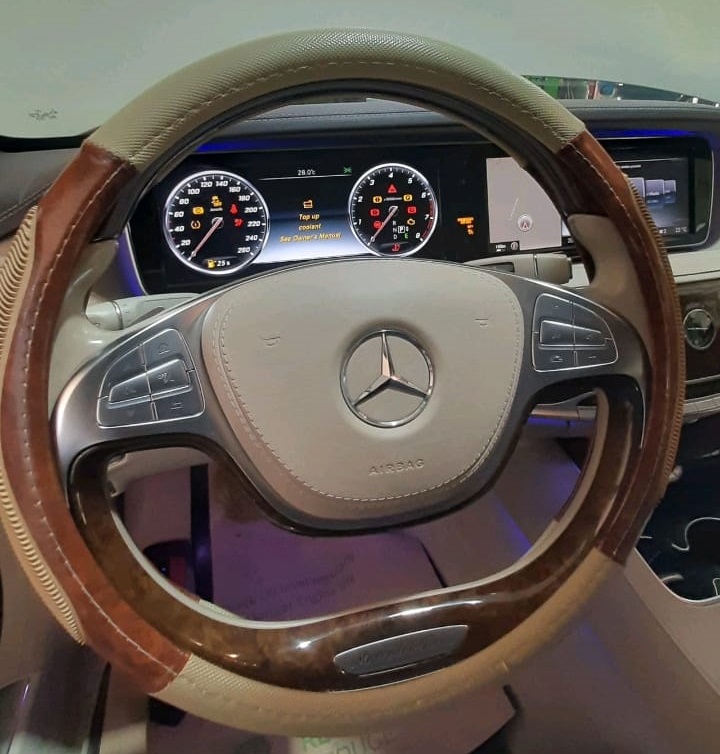
A real-world case highlights the seriousness of this warning.
The Problem
A Mercedes S-Class 500 displayed the “Top Up Coolant” message along with engine overheating. The owner immediately brought the car to a dealership.
Technician’s Diagnostic Steps
1. Coolant level check
- – The expansion tank was low, confirming the warning was genuine.
2. Electrical system inspection
- – The coolant temperature sensor and electric water pump were tested.

3. Cooling circuit tightness test
- – A radiator pressure tester was used to check for leaks.

Findings
- – The technician discovered a leak from the heater control valve.
- – Coolant had also mixed with the windshield washer heater coil, contaminating the washer system.
Repair Actions
To resolve the issue:
- – The heater control valve was replaced.
- – The wiper washer heater coil was replaced.
- – The washer tank was cleared.
- – The cooling system was flushed, bled, and refilled with Mercedes-approved coolant.
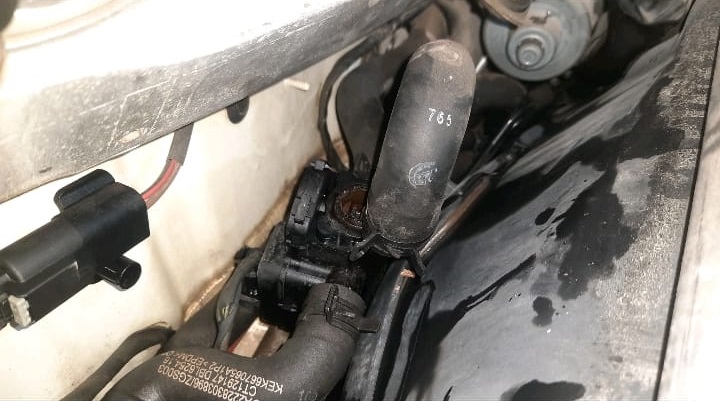
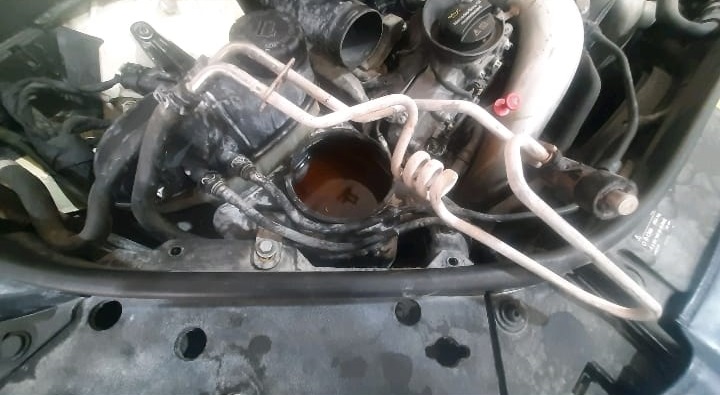
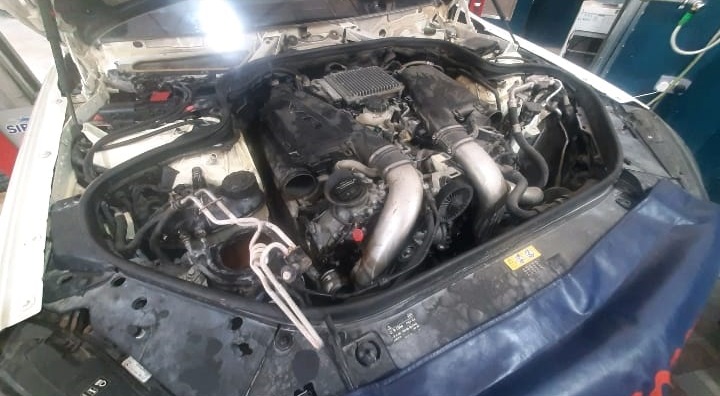
Result
After replace,
- – Heater controle valve
- – Wiper washer heater coil
Finally clear the wiper washer tank and bleeding, circulate the cooling system with new coolant ==> The problem resolved

More Mercedes Cooling System Resources
Want to explore more causes, symptoms, and repair tips for coolant leaks, overheating, and contamination?
Learn more about Mercedes cooling system faults in our full Cooling System Guide.
DIY vs Professional Repair
Not every coolant-related issue requires dealership expertise. Here’s a breakdown:
| Task | DIY-Friendly? | Professional Recommended? |
|---|---|---|
| Check & top-up coolant | Yes | |
| Bleed cooling system | Possible, needs care | Safer at workshop |
| Replace radiator cap | Yes | |
| Replace coolant sensor | Moderate skills | If unsure |
| Replace thermostat | Complex | Yes |
| Repair coolant leaks | X | Yes |
| Heater control valve replacement | X | Done in case study |
How to Safely Top Up Coolant in a Mercedes

Materials Needed:
- – Mercedes-approved coolant (MB 325.0 spec)
- – Distilled water (if using concentrate)
- – Funnel, gloves
Steps:
1: Ensure Safety:
- – Park the car on a flat surface and turn off the engine.
- – Let the engine cool down completely before opening the coolant reservoir to avoid burns from hot steam or coolant.
2: Locate the Coolant Reservoir:
- – Open the hood and locate the coolant reservoir. In most Mercedes models, it’s a translucent plastic tank with a pressure cap, often located near the radiator or the engine.
3: Check Coolant Level:
- – Look at the side of the reservoir to see the current coolant level. There should be “MIN” and “MAX” markers. The coolant should be between these two marks when the engine is cool.
4: Add Coolant:
- – If the coolant level is below the “MIN” mark, you need to add more coolant.
- – Slowly unscrew the cap of the coolant reservoir. Be cautious as there might still be some pressure.
- – Using a funnel, pour the coolant into the reservoir until it reaches the “MAX” mark. If the coolant needs to be diluted, mix it with distilled water according to the manufacturer’s instructions before adding.
5: Secure the Cap:
- – Once the coolant reaches the proper level, securely screw the cap back onto the reservoir.
6: Check for Leaks:
- – Start the engine and let it run for a few minutes while monitoring the coolant reservoir. Check for any leaks or drops in the coolant level.
7: Bleed system to remove air pockets
8: Dispose of old coolant responsibly
Preventive Tips
To avoid repeated “Top Up Coolant” messages:
- 1. Regular checks Inspect coolant monthly, especially before long trips.
- 2. Use OEM coolant only Mercedes-approved formulas prevent corrosion and scale.
- 3. Check caps and hoses A loose reservoir cap or aging hoses often cause slow leaks.
- 4. Complete servicing Bleed the system properly after coolant replacement.
- 5. Address early leaks Small leaks, if ignored, lead to major failures.
Key Learnings
- – The “Top Up Coolant” warning is serious never ignore it.
- – Causes range from simple low coolant to complex faults like leaks or thermostat failure.
- – DIY fixes are limited to topping up, bleeding air, or replacing caps/sensors.
- – Professional diagnostics are required for leaks, valve faults, and water pump issues.
- – A case study in a Mercedes S-Class showed how replacing the heater control valve and washer heater coil resolved persistent coolant loss.
Conclusion
The “Top Up Coolant – See Owner’s Manual” message in a Mercedes is a critical safety alert. While sometimes resolved with a quick top-up, it can also point to deeper issues in the cooling system.
By following proper diagnostic steps, using genuine Mercedes coolant, and seeking professional help when needed, you can protect your engine from overheating and ensure long-term performance.
FAQ – Top Up Coolant Mercedes
1) What does “Top Up Coolant – See Owner’s Manual” mean on a Mercedes?
It means the coolant in the expansion tank is below the safe level or the system has detected a sensor/pressure issue. Topping up may clear the alert, but recurring messages usually indicate a leak, trapped air, a failing cap, thermostat, or water pump.
2) Can I drive with the “Top Up Coolant” warning?
Avoid long trips. Low coolant can cause overheating, head‑gasket failure, and engine damage. If the level is low, top up with Mercedes‑approved coolant and monitor. If the warning returns, schedule a pressure test and scan.
3) What coolant should I use in my Mercedes?
Use Mercedes‑approved coolant (MB 325.x spec) premix or concentrate + distilled water per the label. Do not mix unknown coolant types.
4) Why does the warning persist after topping up?
Likely causes microscopic leaks, cracked expansion tank, faulty level sensor, air pockets, stuck thermostat, weak cap, or failing electric water pump. A shop can confirm with a pressure test and diagnostic scan.
5) How much does it cost to fix?
Typical ballparks (may vary by model/region):
- – Coolant top‑up/bleed: $60–$150
- – Expansion tank + cap: $180–$450
- – Level sensor: $120–$280
- – Thermostat: $400–$700
- – Electric water pump: $700–$1,300
Leaks elsewhere depend on parts/labor.
6) Do I need to bleed the system after adding coolant?
If the level was very low or after service, yes. Air pockets can trigger repeat warnings/overheating. Run the heater on HOT, monitor the level, and top up again if it drops.
Author
Written by: Mercedes Expert
Automotive Technical Trainer & Mercedes-Benz Diagnostic Specialist
With years of hands-on experience repairing and diagnosing Mercedes-Benz vehicles, specializes in case-study-based troubleshooting guides that blend workshop accuracy with educational clarity.
Last Updated: August 2025
— Salim, Mercedes Expert
Independent specialist in Mercedes-Benz diagnostics, CAN Bus analysis, troubleshooting case studies, and EV systems.

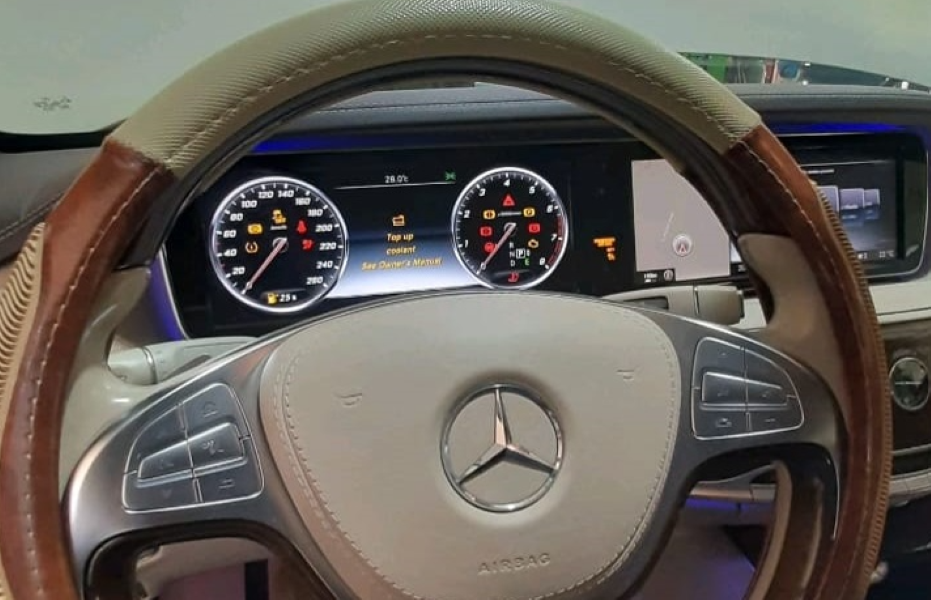


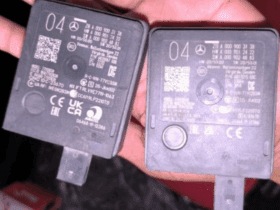

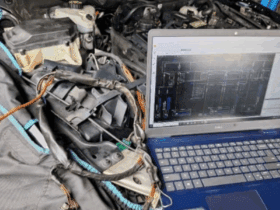
Leave a Reply